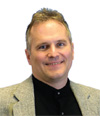How Do You Read?
Technical reading today is a lot different and much more complex than it was even 15 years ago.
Latest News
September 22, 2009
By Peter Varhol
 |
I’m a baby boomer. In my formative years, and in fact for much of my adult life, reading was a pretty straightforward proposition. You picked up a book, magazine, or newspaper, started at the beginning of a story, and continued until you reached the end or got bored and stopped reading.
I did a lot of reading in my youth. I read our two sets of encyclopedia from cover to cover, at least twice. The nearest town had a Carnegie Public Library, and as a teen (I had to drive myself to the library) I spent many evenings and weekends in that imposing marble structure. My education probably came less from my school system than it did from my own reading.
Today, reading is far more complex and varied. I subscribe to one print newspaper, and that’s about it. The vast majority of my reading is online, when I read a combination of news, technical information on publication and vendor Web sites, RSS feeds, Twitter, blogs, podcasts, screencasts, webcasts, and streaming video. As Marshall McLuhan put it more than 40 years ago, the medium is the message. You choose the medium that best conveys your intended communication, and the medium can reinforce the message, if you do it right.
We didn’t get to this point all at once; digital media progressed rapidly but mostly serially over the years. Many of us had e-mail as early as the 1980s, which spawned an explosion of short and crisp messages to individuals and small groups.
Around 1992, I started receiving encyclopedias on CDs (it was before the DVD era). My favorite was Microsoft Encarta, which offered excellent content, including photos, plus the (for that time) unique capability of hyperlinking with related content. Rather than reading sequentially, I could jump, almost randomly, to other related topics. It was a surprise at every click, and an enjoyable way to learn.
I got my own IP and Web account in 1995, but the nascent Web was primarily static and difficult-to-change text and graphics. Other than having a bit more freedom as to the sites I visited, it wasn’t that much better than the Encarta CD.
That changed rapidly, of course. The sheer number of websites grew at an incredible rate, and content became much more flexible and varied. Today it is just as likely for you to read, listen, watch, and even perhaps participate in technical content, maybe all at the same time. You can ask questions, get immediate feedback, or download a solution to try immediately.
Just as my reading patterns have changed over the years, so have yours, even though we may be of different generations. Engineers get their information in a much wider variety of ways than even a decade ago. And you have a greater opportunity than ever to synthesize information from multiple sources into something completely different and innovative.
Today you don’t know where your next vital bit of technical information is going to come from, or what combination of message and medium will produce your next breakthrough. But you have to feel comfortable with more than reading text on a page. To be an effective engineer, you have to be able to use all of your senses, and aggregate information from many different sources and media. If you can be a success in doing that, you can create great products.
Subscribe to our FREE magazine, FREE email newsletters or both!
Latest News
About the Author
Peter VarholContributing Editor Peter Varhol covers the HPC and IT beat for Digital Engineering. His expertise is software development, math systems, and systems management. You can reach him at [email protected].
Follow DE





